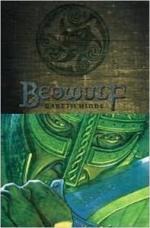|
This section contains 886 words (approx. 3 pages at 300 words per page) |

|
Beowulf: A Critical Analysis
Summary: The Anglo-Saxon epic Beowulf masters the depiction, symbolism, and struggles of good and evil. The battle between Beowulf and Grendel illustrates this point.
Evil is defined as something that causes harm, destruction, suffering, and brings misfortune. Evil is also an adjective as which it is used to describe something wicked or morally wrong. Good is the direct contrast of evil. Good, also used both as a noun and adjective, represents something positive, benevolent, and beneficial. In the English language there are no two words with such great depth in the contrast of their definitions. History has found numerous ways to represent all good and evil. Reading the majority of literature, one almost always finds a contrast of good and evil. The Anglo-Saxon epic, Beowulf, masters the depiction and symbolism of good and evil forces.
Unlike the majority of words that exist today in common language, good and evil have no overlapping qualities or similarities. For this reason there is a constant struggle between what is good, and all that is evil...
|
This section contains 886 words (approx. 3 pages at 300 words per page) |

|


